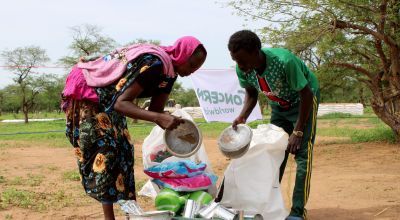
Read our 2024 annual report

Knowledge Hub
From safety and logistics to funding and burnout, there are a lot of obstacles to humanitarian aid.
We live in an unprecedented time for humanitarian crises, not only in terms of the number of crises, but also in terms of how protracted and complex many of these crises have become. Conflict and climate change often overlap, leaving millions of people urgently requiring assistance.
This is a need that nearly 4,500 Concern team members are eager to meet. However, aid workers delivering frontline support often face a number of obstacles in their day-to-day work. Here are eight of the biggest humanitarian challenges we see in our work every day.
1. Getting aid where it’s needed most
Access is one of the biggest humanitarian challenges, especially with so many fragile contexts and conflicts happening around the world today.
One phrase you’ve probably heard a lot in the last year is “humanitarian corridor.” These are temporary, demilitarised zones designed to allow humanitarian aid to get into a country or crisis zone (and for refugees to get out). However, these corridors often require international or inter-factional cooperation, and this can be difficult to organise, especially if access is needed in the long-term or on an ongoing basis. (We talk more about this particular challenge in our Gaza crisis explainer.)
However, humanitarians also struggle for other forms of access: Foreign aid workers often face delays or denials of visas, both local and international team members may be restricted in their travel within a country, and project proposals can be denied by government officials. Even if all of the permissions are in place, we may also face challenges based on poor infrastructure. This is common in countries like Liberia, where rainy seasons combined with a poor road network may delay or even prevent accessing areas where we work.
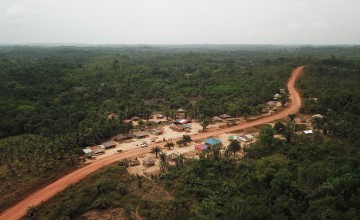
2. Donor fatigue and competition
If there is one thing the world does not suffer a lack of in 2024, it’s humanitarian crises. However, this leads to a very real phenomenon among donors and supporters known as crisis fatigue: After an emergency first hits, it may receive significant coverage in the international press, and donations will often see a spike in the ensuing days or weeks. However, unless the emergency directly impacts us or our loved ones, we often “tune out” after those initial weeks. That doesn’t mean that the crisis is over — far from it, in fact. Unfortunately, the next crisis is never too far away, and caring full-time for everything going on in the world is a big ask for any one person.
This does, however, correlate to funding for humanitarian response, both from individual donors and larger institutional partners and government funders. With foreign assistance budgets tight, many countries in dire straits are left short. When conflict in Sudan escalated last April into civil war, an appeal was launched to cover humanitarian response for the rest of 2023. That was only 48% funded. As of March 2024, the United Nations’ budget for emergency response in the country ($2.7 billion to meet just the frontline needs) was just 5% funded.

3. Inflation and shortages
In addition to creating more competition for donor funds, the number of humanitarian crises happening in the world right now can have another global impact: inflation rates. This was a major issue with the COVI-19 pandemic, one that many international economies are still recovering from. However, the added crisis in Ukraine that escalated in 2022 caused another inflation spike via export and fuel shortages.
This had an especially dramatic effect in low-income countries: In 2023, the Malawian kwacha devalued over 50% against the US dollar, as did the South Sudanese pound. The Pakistani rupee devalued nearly 30% against the dollar, and the Sierra Leonean leone devalued by more than 60%.
These inflation rates and accompanying shortages (especially of fuel) not only impact the people we work with, but also our own work. When budgets are set for programmes, we account for some fluctuation based on economic trends. However, it’s not always easy to predict a massive crisis, and the economic fallout from these emergencies often leave us struggling to keep up.
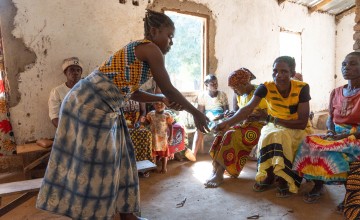
4. Restricted funding and timelines
There are a few other financial challenges for humanitarians. In an uncertain economy, it’s often a struggle to get funding for longer-term projects (anything that lasts beyond a few years). While emergency responses usually focus on meeting immediate needs and aftermath, longer-term projects are essential for offsetting the risks posed by future emergencies. In some cases, they can also decrease the likelihood of future emergencies altogether.
Restricted funding can also be an obstacle in these contexts: If we receive a grant earmarked for a specific project or use and then an unexpected emergency strikes, we can’t always re-purpose those funds to where they need to go most. In an emergency, the first 72 hours are a critical window for delivering assistance and helping the most vulnerable families weather the storm, and if we don’t have the right funds to accommodate that on short notice, that can be a costly delay. (This is why Concern has its own emergency fund.)
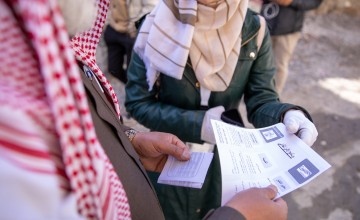
5. Cash liquidity and mobile access
Communications and technology are key to humanitarian response. Mobile cash transfers have been especially revolutionary for our work, allowing for contact-less distributions of essential funds.
However, no system is perfect. Governments may place restrictions on cash transfers (especially foreign transfers, which can create complications between our international funders and local offices). If a certain emergency places stress on local power grids and cellular towers, this can also delay the transfer of mobile money payments — not to mention create a number of other communications challenges between team members.
Emergencies also often lead to cash shortages as people withdraw as much cash as they can from ATMs as a security precaution (especially in areas that tend to rely on cash versus card or mobile payments). This has a huge impact on the lives of people affected by a crisis and implications for the long-term security of a community. However, it also limits a humanitarian organisation’s ability to offer cash assistance or finance a recovery plan. This can also lead to tensions between humanitarians and the communities where they work.

6. Looting and theft of aid supplies
NGOs aren’t immune to the looting that often follows in the wake of a major crisis. In fact, our warehouses and offices are often targeted by people who know (or assume) that we have stocks of essential food and other supplies. Often, convoys can also be targeted as they’re making deliveries.
These losses set us back in terms of what we have on-hand, but they can also create a bigger issue if there isn’t a clear humanitarian corridor or other form of access for new supplies to get in.

7. Attacks against humanitarian workers
Unfortunately, humanitarian workers are also the targets of attacks, and the last few years of increased conflict have made humanitarians even more vulnerable. According to a UN report issued in May, 91 humanitarian workers were killed in 2023. A further 120 were wounded, and 53 were abducted. (This report doesn’t include aid workers in Gaza which, at the time of the UN’s report, claimed the lives of 224 humanitarians, including 190 UN personnel.) National staff members form over 90% of the reported casualties.
Conflict drives many of these attacks, however misinformation and mistrust of humanitarian workers can also lead to attacks that aren’t directly related to fighting. Health emergencies are one prime example, as they can become easily politicised. During the 2018-2020 ebola outbreak in the Democratic Republic of Congo (the second-largest ebola outbreak on historical record), over 450 acts of violence or threats against health workers were reported to the reporting organisation Insecurity Insight.
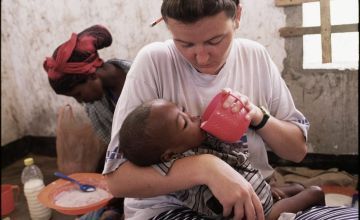
8. Burnout and turnover
Between funding constraints, an increasing number of emergencies, and the threats they face in their day-to-day lives, it’s not surprising that the humanitarian sector has a high turnover rate. In-country humanitarian work is stressful by nature, and even those who are ideally-suited to the nature of emergencies may find over time that their mental and physical well-being suffer from the nature of always being on-call or facing especially high risks.
Often when an emergency hits, Concern staff are just as affected as the people they work with; many of our team members in Sudan had to evacuate their homes in the initial weeks of the conflict or relocate to another part of the country. Many of our 500 team members in Türkiye and Syria were left traumatised after the February 2023 earthquakes, working from their cars during the initial relief response out of fear that more buildings would collapse amid ongoing aftershocks.
With funding shortages and inflation added to the mix, it’s understandable when our colleagues opt to move on to another organisation, either within the sector or in a different industry. But it does often lead to other team members taking on more work while we try to find a qualified replacement, or it can force certain projects to be delayed.

Concern’s humanitarian aid and emergency response
Emergency response is part of Concern’s DNA. Last year alone, Concern responded to 66 emergencies in 20 countries, reaching 15.5 million people. In each context our goal remains the same: fulfil our humanitarian mandate.
When an emergency strikes, we seek out the most vulnerable and hardest-to-reach communities to meet their immediate needs, and work with them to design innovative, fast and effective responses. We stay with them to help rebuild their lives and to ensure that they are better able to cope with future crises. Your support allows us to do this vital work.
While Concern is dedicated to meeting urgent humanitarian needs, we are also consistently working to improve our work, both for the people we reach and for our nearly 4,500 staff members representing 50 nationalities. This includes three humanitarian training programmes designed to improve the effectiveness of the humanitarian system as a whole, led with partners including USAID, International Medical Corps, and the Harvard Humanitarian Initiative.
Our impact in 2024
people reached through our emergency response
people reached through our health interventions
people reached through our livelihoods programmes




